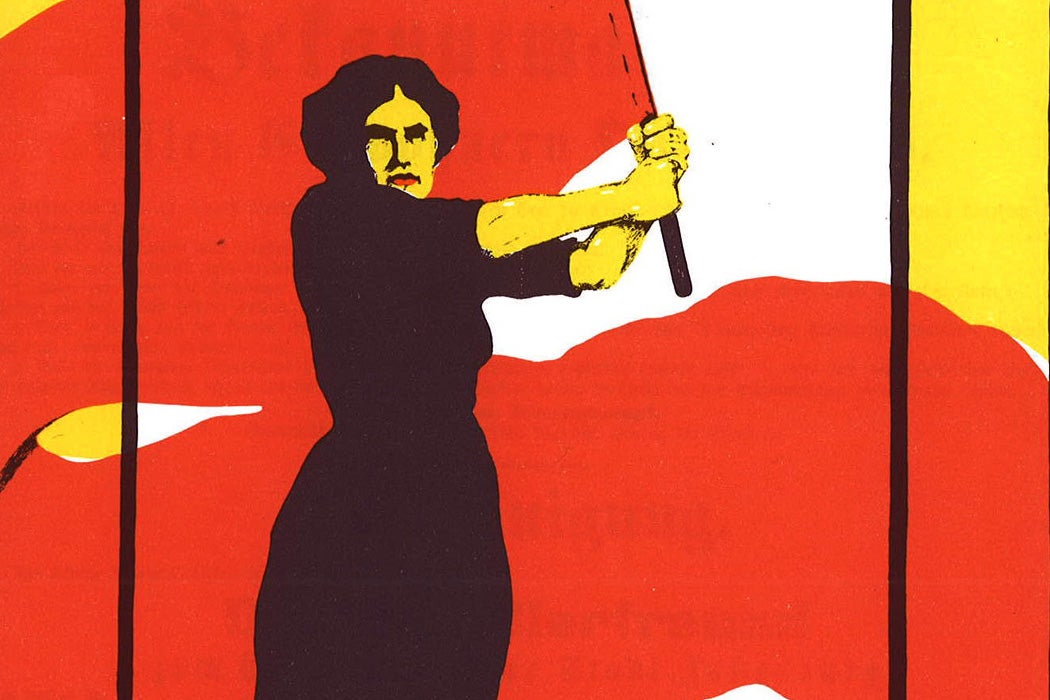In 1987, March was designated as Women’s History Month in the United States. The month of March was chosen because it incorporated International Women’s Day, March 8th. The story of how International Women’s Day came to be, however, is convoluted to say the least.
As historian Temma Kaplan writes, International Women’s Day has its origins in socialism and the conditions of working women. Kaplan acknowledges the importance of secular communal holidays for nineteenth-century socialists, communists, and anarchists, citing Bastille Day, May Day, and various anniversaries of the Paris Commune. These holidays were more about “the solidification of a sense of community” than the actual date they fell on. That said, it’s worth noting how oddly complicated the history of this holiday is, complete with invented backstories and shifting dates. Here is a rough chronology:
March 8, 1857: A women textile workers’ strike does, or maybe does not, happen in New York City. As Kaplan’s article explains: the origin of International Women’s Day was “a story I have had recounted to me numerous times and therefore know well. A spontaneous demonstration staged by New York City women garment and textile workers in 1857, protesting low wages, the twelve-hour workday, and increasing work loads, was dispersed by the police, rather brutally.” She goes on to reveal, however, that French scholars have called this origin story into question, suggesting that the strike was invented retroactively as a way to give the holiday a compelling, non-socialist backstory.
July 1889: In Kaplan’s reading, the real story of International Woman’s Day (yes, singular in its first iteration) began when Clara Zetkin, the editor of the German Social Democratic party’s women’s newspaper Gleichheit, attended a Bastille Day meeting in Paris. The leftist groups assembled there called for a May Day demonstration for workers’ rights. Zetkin was inspired, and began to lay the groundwork to eventually establish International Woman’s Day as a Communist holiday. Notably, Kaplan writes that Zetkin was “a virulent opponent of feminists inside and outside her party,” but she was concerned with the rights of female workers.
March 8, 1907: This date is accepted by many Europeans as the inaugural International Woman’s Day, allegedly started to commemorate the 50th anniversary of the aforementioned textile workers’ strike… of which there is no real evidence. Kaplan notes that this odd shifting around of dates and origin stories is result of a “long-standing conflict between feminists and communists over whether women have rights beyond those they hold as workers.”
August 1907: Under Zetkin’s leadership, a group of socialist women met in Germany to discuss how to publicize their goals of equality.
March 8, 1908: New York City’s Social Democratic Women’s Society held a large meeting on woman suffrage. This was significant because it marked a shift; previously American and European socialists and suffragists had been politically at odds with each other. Now they began to express solidarity.
February 1909: American socialists declared the last Sunday in February as National Woman’s Day. (Sunday was chosen as it was the only day working people had off.) A meeting in New York City focused on equal rights and women’s suffrage. Addressing a Brooklyn audience, Charlotte Perkins Gilman said, “It is true that a woman’s duty is centered in her home and motherhood, but home should mean the whole country and not be confined to three or four rooms or a city or a state.”
March 18, 1911: The first International Women’s Day was held in Europe, focused on women’s rights and suffrage. The date was chosen because it was the anniversary of the Paris Commune. Women marched and demonstrated all across Europe. Americans continued to celebrate on the last Sunday in February. World War I, however, “ended all possibility for social reform for five years.”
February 1913: To celebrate Woman’s Day, Russian Bolshevik women marched to protest poor living conditions, high rents and food prices, and widespread layoffs. They chose the last Sunday of February to celebrate the day “American-style.”
March 7, 1915: Zetkin gathered socialist women for an anti-war demonstration.
February 1917: In the name of Woman’s Day, Russian Bolshevik women took to the streets again… and, when the Russian army was ordered to shoot the strikers, the events that led to the February Revolution began.
1922: After the war, the formerly socialist Zetkin became Communist. Zetkin worked with Vladimir Lenin to establish International Women’s Day, March 8th, as a Communist holiday. It was also celebrated in Communist China and Spain. The holiday remained associated with Communism for some decades. (A 1932 Soviet poster proclaims “8th of March is the day of rebellion of the working women against kitchen slavery. Down with the oppression and narrow-mindedness of household work!”)
The 1950s: Leftists started claiming that the original National Woman’s Day was on March 8th, 1907 and that it was held to mark the fiftieth anniversary of a women textile workers’ strike in New York City on March 8, 1857. The French correctly pinpointed the day’s origins to before the Russian Revolution, but they made up an even older mythological history to especially de-Bolshevik the day and make it more palatable for non-Soviets.
1967: International Woman’s Day is revived in the United States by a women’s group in Chicago, which “included daughters of American Communists who remembered having heard of the holiday.” Kaplan notes that these feminists “revitalized the celebration and infused it with new meaning.”
1975: The UN’s International Women’s Year codified International Women’s Day as March 8th. The holiday’s radical political origins have been largely forgotten.







